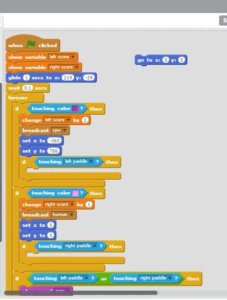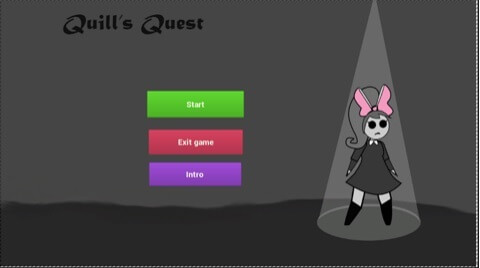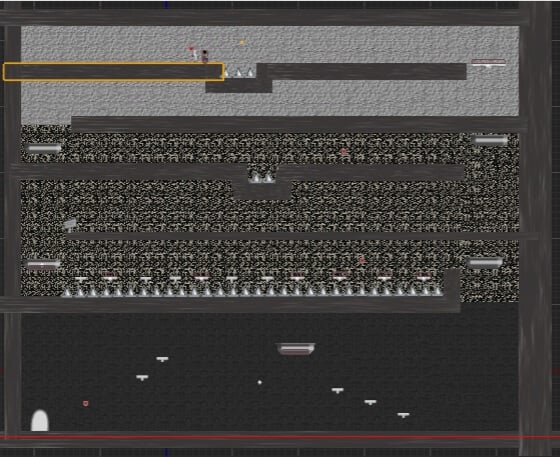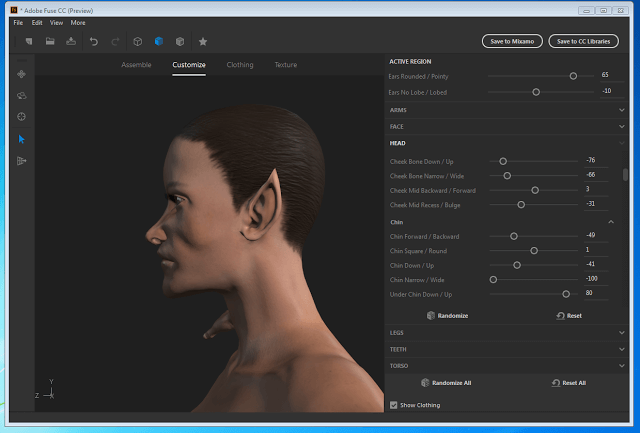Features
What I Learned as a Game Design Student
I didn’t plan on being a Game Design Student.
My story is essentially the one every student doing their final exams is petrified of: Not getting enough points to get into the course you want to do. For many years I had my heart set on doing a course in creative writing. At the age of seventeen I had three publications under my belt, as well as determination and talent. Unfortunately I was never as skilled academically as I was in regard to my writing. On top of that the college I wanted to apply to was extremely expensive and when I got my results, I only got three hundred and fifteen points. The minimum to enter was four hundred and seventy five.
Yikes.
A while before I did the leaving cert my mother suggested I do a different course. This wasn’t a bad idea in case I didn’t get the points to do the course I wanted (which I didn’t) and on top of that, I needed a skill to bring in money since creative writing is a very difficult area to get employed in. Due to this, I decided to apply for a course in Game Design in a nearby college. I had an interest in games and it was something creative and a practical that could get me employed later in life. Game Designers learn a wide variety of skills and games contain elements of creativity and story writing so it was the best I could go for. Now, a lot of people visualize being a game designer as a tired worker hunched over a computer typing in binary code and crying. Well, as a game design student I can tell you with the utmost certainty that being a game designer is…a bit like that. Sometimes.
Game design is difficult. It’s a labor of love as some would say or a labor of ‘oh god I need money please hire me’. Regardless, the point I’m trying to make is that game design is difficult and tedious. My first assignment was to make a game of Pong in an online program named scratch. This was very simplistic but was necessary to teach us the basics as to how game design worked.

Might as well just quit now Nintendo, a new competitor is taking the gaming world by storm.
Ok, so it’s a psychedelic cat themed version of Pong. Got it. So why am I showing you this? Well, for the same reason my tutor made us make it: To get an idea as to what coding is like.

All of the text on the right is code. On the top part, you can see an orange tab with a green flag. This is the starter of your coding, per se. When you start up the game whatever is under the code will take place immediately. Now, this coding is focused on the ball (aka nyancat) since he/she/it is selected in the bottom left sprite panel. All of the code determines what nyancat does during the game.
As you can see the code says different things and has different colors. It’s pretty self-explanatory what different parts do. Near the top for example, a piece of dark blue code says ‘glide 1 secs to x219 y-29’. This code got the ball moving in a certain direction to start the game of Pong. There is also two different strips of pink on the left and right edge of the screen. In addition, there is code which shows how the score will change if the ball touches the color on either side. While this is all very simplistic coding it still shows a bit about how coding works. Each sprite has different code attached to it that makes it do different things. The text runs from top to bottom and forms a linear path of coding in which each segment fulfills a different purpose. They all work in a line and perform various functions that all contribute to the final product.
Anyway, let’s take a break from coding and look into what it’s like to be a game design student:
In game design, you don’t just focus on making games. What? That’s crazy, right? Well, it’s actually very important. Game design doesn’t just consist of gaming: You need a soundtrack, animators, advertising, communication skills, etc. Due to this, we take other modules that aren’t focused on the bare elements of coding but rather dabble in different skill areas to help us be more independent in creating games. Here are some of the classes we do:
Animation: Since I’m obsessed with drawing and cartoons I LOVE this class. Here we learn the basics of animation and how to animate in programs such as CC animate. This may seem a bit irrelevant but for making character animations it goes over the fundamentals of what we need to know. It’s an important class and the skills it teaches us can be utilized not just in game design but in other jobs such as web design or advertising.
Music technology: Here we learn how to use music software so we can compose an original soundtrack for our games. This also stems to sound effects such as gunfire or footsteps. It may not sound that important but having to pay a composer to make a score for your game can cost a lot of cash, and I don’t know of many indie developers that can just casually hire Hans Zimmer to make their game soundtrack.
Communications: This class helps give us practical advice for when we need to talk to people about something in regard to our work. This class covers issues like preparing an appropriate cover letter for getting work experience/an internship or for making a presentation. It’s extremely important since game designers are flighty nocturnal creatures that spend most of their time locked away in the computer lab guzzling energy drinks and watching cat video’s and shows like Voltron– I MEAN WORKING on games ha ha ha… Erm, anyway, since us game designers have little to no social skills (or social life, that one applies to me especially) communications is important so that we can explain our point of view or ask important questions in a situation effectively and professionally.
There are many other classes we do as well such as Design Skills, Web Authoring, Image Processing, etc. I don’t want to turn this into a massive list of everything we do in every single class but I can tell you that the skills we learn all contribute toward making games. I understand that doing all of this on top of making games seems like a lot and yeah, it sort of is, but as you learn it becomes easier to handle. You learn at a gradual pace and over the course of a few months, you learn a variety of skills and techniques that are actually very useful in a number of ways not just relating to game design. I think that’s one of my favorite aspects of game design: there’s just so many possibilities of what you could do as a job. Even just one module from our class can teach you skills to become an animator or a web designer and they’re not even the primary focus of this course. Now, as a first year, I wouldn’t immediately run and try for a job. You’d need to do about 3-4 years of game design before you start applying for positions but the skills you would pick up along the way plus all the opportunities would be well worth the time you put in.
For a while, I’ve talked about coding and classes, but here I’m gonna get into the real meat of this subject: What we did in our first year of game design. Well, actually it should be what we’re doing in our first year of game design since at the time of writing this article I’ve just started making my 3D game, but anyway, let’s get to it. We had three main goals for our first year: Make a 2D side-scroller game, get work experience, and make a 3D game. The 2D game taught us the fundamentals of game design and basic elements of any game. Similar as to how my game Nyan Pong was basically Pong, our 2D side-scroller was basically a copy of Super Mario Bros. We had enemies, health, pick-ups, win screens, death screens, etc. My 2D side-scroller game was called Quill’s Quest. It was a story about a girl who had to escape a dungeon and get past vicious enemies in order to survive. It was quite simplistic and I do plan to revisit it at some point. Ultimately, the game served a basic purpose of teaching me how to code in more detail than “Nyanpong” and also in the functions of how a game is programmed. Here’s the menu screen of my game:

These are some of the sprites I had in my game.
![]()
This was the full scale of my level. This game was designed in the software Unreal Engine 4 by the way, a free industry software that is extremely high-tech and versatile. I highly suggest you look into it if you’d like to learn how to make a game by yourself. It’s probably one of the best pieces of software out there. My game isn’t fully functional but it has a lot of the coding in there and will give you an idea as to what a first year’s 2D game is like. Spoiler alert: Not that great. Even still though, I’ll try to upload it to my blogger page so you can play it if you really want to.

That was my 2D game. A lot of work went into it and I wasn’t perfectly happy with the finished product but you need to remember: This is my first time making a proper 2D game. I knew this game wasn’t going to be perfect and it wasn’t made with the intent of making an amazing game. I made it so I could learn how to code and learn the basics of designing a game.
Now we’re moving onto work experience. Work experience is a mandatory module of Game Design and without it you would fail instantly, so it’s not to be taken lightly. My classmates and I needed to get a job working for a company relating to the Games Industry or in some area of the line relevant to the work we’re doing. My work experience was writing articles for Goomba Stomp on gaming. I have skills in writing and at the time of sending my letter of application I had four printed publications, so I attached that information to my cover letter and wrote about it in more detail in my CV. I also showed pictures of an award I had won plus images of the publications in print. In addition to that, I mentioned my interest in gaming and the fact I’m a game design student. This showed I had specific extracurricular skills that would be beneficial for the job I was applying for and that, as a game design student, I could have a better insight into games as opposed to an ordinary player. When applying for work experience try to show your skills and give the employer basic elements of who you are and what you can do that would be valuable to their company. You can never underestimate just how important work experience is.
Finally, there’s my 3D game. We haven’t actually gotten into programming or making much of the game as of now so there’s not a massive load of work I can show you. However I can talk a bit about the structure. We needed to come up with a plot and a plan for our 3D game. In this we needed to write about what our game was about, the objectives our character had and where it was set. Our tutor even gave us out sheets that asked us questions about our 3D game and made us flesh out the plot more. This may seem pointless but it’s actually very important. While you may not need to write in excessive detail the world-building and back story of a game, you do need to let the players know what their objective is.
As of now, we’ve done models of our main characters. First, we had to write about their back story, skills, and appearance to build up an image in our mind as to what they looked like. My character is a female around the age of 18/19 named Rattalia. She’s a thief who leads a group called ‘The Street Rats’ who steal from the wealthy corrupt and give to the poor in order to balance out the severe poverty in their world. The world they live in has a heavy emphasis on social classes and the game centers around Rattalia breaking into the mansion of a man who wronged her in the past. The objective is to steal a precious gem from his mansion called ‘The Lunar Eye’ to sell and fund her next heist, as well as giving portions of it as anonymous donations to underfunded hospitals and orphanages. It may seem silly to focus so much on the back story of a game but it helps set the scene and gives the player an idea of who they’re playing as and offers a stronger level of immersion into the game.
Since she’s a thief I wanted her to have an outfit relevant to her job. Rattalia’s clothes consist of comfortable and durable clothing that blends in with the background and won’t inhibit her when she runs. I wanted her appearance to mimic certain aspects of her personality. First though, I had to make Rattalia.
First we made a basic body for our character in a program named Fuse. We would then begin to alter the character’s appearance based on the character report we had drawn up of our protagonist. Rattalia has sharp features such as high cheekbones, a jutted chin, and a thin face. I had to alter the slides pictured on the right to get her as close to the image in my head as possible. Initially, her face was very round and so were her eyes so I made them sharper and more angular to give a sly look to her appearance. This was her face at the start (bar the ears):

Here we had more defining of the cheekbones and sharpening of her chin. I also made her noses arch more curved than straight.

Eventually, I ended up with an image like this.

Her expression is cocky so as to show she’s a schemer. I designed her hair in another program named blender so as to give her the specific hairstyle I wanted for her character. The image isn’t fully rendered so it looks a bit weird (eyelashes and skin tone are different due to rendering) but you get the basic idea as to what she’s supposed to look like.
We haven’t gotten much further than that with our 3D game. A lot of the coding is vastly different from a 2D game and since we’ve just begun there isn’t much else I can elaborate on in this specific topic. Well, I’ve talked about a number of topics in this post relating to game design so I should probably explain what my schedule is like.
We typically spend most of our classes using computers to complete the majority of our assignments. As a game design student our marks are assigned to us based off of continuous assessment. We do have exams but they’re not extremely difficult and ask pretty basic questions such as: ‘Why do people play video games’ and ‘List 3 genres of gaming’. Our assignments make up the majority of our marks. We don’t usually get homework and most of our work is done in the computer lab. My days vary in length, Monday being a 9-4 day while the others are significantly shorter, the shortest being 9-12. Our assignments consist of a mixture of doing work and then writing reports about our work. Both are important so you can’t just do one or the other.
In conclusion, game design can be difficult but also very rewarding. Going into this course, I wasn’t sure how I’d come out the other end, or even if I would, but I can say with total certainty that this was a brilliant course to do. Game Design is a useful degree due to its flexibility and the constant ever-growing demand for workers in the games industry. If you’re patient and have an interest in games, I’d definitely suggest game design to you. Not just because of its versatility though but because of how damn rewarding it can be.

-

 Features4 weeks ago
Features4 weeks agoFarewell to a Beloved 13-Year-Old Isekai Anime That Brought Us Endless Laughter
-

 Technology4 weeks ago
Technology4 weeks agoGamification and Productivity: What Games Can Teach SaaS Tools
-

 Features3 weeks ago
Features3 weeks agoThis Upcoming Romance Anime Might Just Break the Internet; Trailer Just Dropped!
-

 Features2 weeks ago
Features2 weeks agoDon’t Watch These 5 Fantasy Anime… Unless You Want to Be Obsessed
-

 Culture4 weeks ago
Culture4 weeks agoIs the Gaming Industry Killing Gaming Parties?
-

 Features2 weeks ago
Features2 weeks ago“Even if it’s used a little, it’s fine”: Demon Slayer Star Shrugs Off AI Threat
-

 Game Reviews4 weeks ago
Game Reviews4 weeks agoCall of Duty and the Myth of Military Realism: Tactical or Just Tacticool?
-

 Technology4 weeks ago
Technology4 weeks agoDigital Cash: For Gamers Who Don’t Ask Permission?
-

 Technology4 weeks ago
Technology4 weeks agoDiscover the Top PDF Drive Tool Today
-

 Culture2 weeks ago
Culture2 weeks agoMultiplayer Online Gaming Communities Connect Players Across International Borders
-

 Game Reviews2 weeks ago
Game Reviews2 weeks agoHow Overcooked! 2 Made Ruining Friendships Fun
-

 Game Reviews4 weeks ago
Game Reviews4 weeks agoIs Monster Hunter World Still Worth Playing in 2025 After Wilds?


















